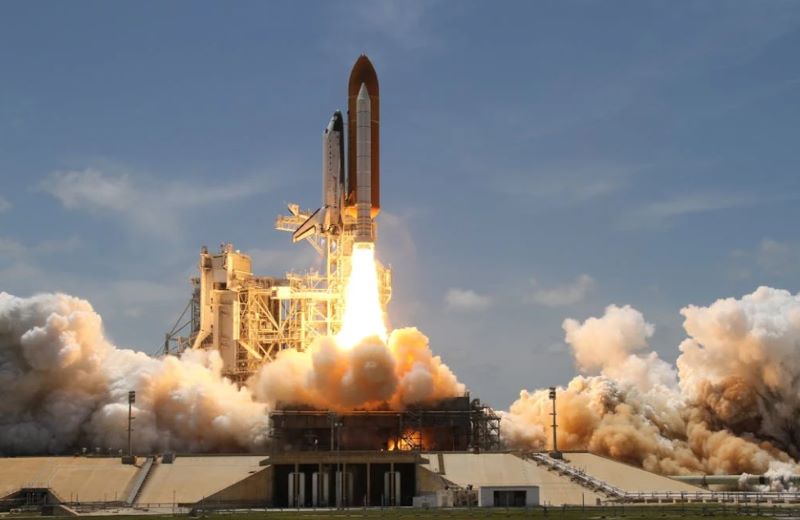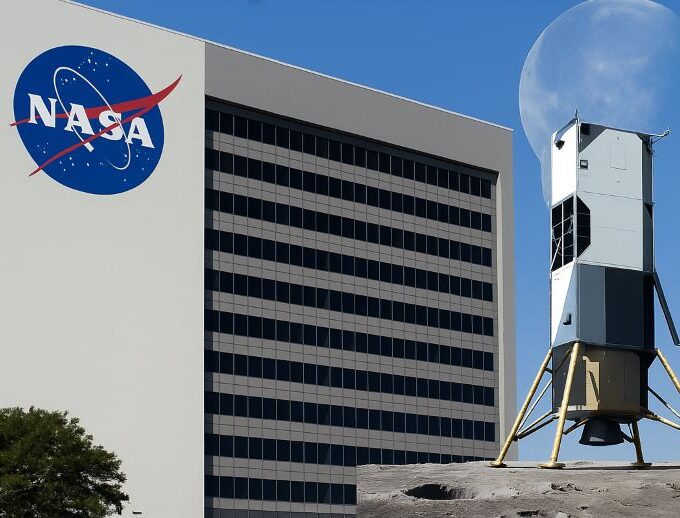On July 25, local time, a spokesperson for NASA announced that about 20% of its employees would be laid off as part of a personnel adjustment. According to the spokesperson, approximately 3,870 people are expected to leave the agency, though this number may fluctuate in the coming days or weeks due to various factors. After the layoffs are completed, the number of active employees at NASA will be reduced to about 14,000. This move is part of the Trump administration’s broader plan to reduce the size of the federal workforce. The news of such a large-scale layoff has caused a major stir across the aerospace industry.
In a subsequent statement, NASA mentioned that the exact number of layoffs remains uncertain, depending on whether employees retract their resignation requests and whether those requests are approved. The statement also emphasized that safety remains the agency’s top priority and that it is working to streamline operations while ensuring that key missions, including lunar and Mars exploration, can continue. However, this statement has not alleviated the concerns of many employees and industry experts, who are deeply worried about NASA’s future.
Mass Layoff Plan Shocks the Aerospace Industry
In May of this year, the U.S. government released a “streamlined budget” proposal for the fiscal year 2026, which suggested cutting NASA’s budget from $24.8 billion to $18.8 billion, a reduction of nearly 25%. The largest cuts in this budget would affect scientific programs, raising widespread concern in the scientific community. According to analysis, this would be the largest single-year budget cut in NASA’s history, and when adjusted for inflation, the budget for FY 2026 would hit its lowest point since 1961. This is undoubtedly a heavy blow to NASA’s scientific research and exploration missions.
In response to the significant budget cut, NASA has had to resort to layoffs to alleviate financial pressure. This layoff is not a small-scale adjustment; it spans across various fields, including technical, business, and management areas. Initial statistics suggest that 325 employees are directly impacted, and while this number may not seem large relative to the total number of layoffs, each position lost can have significant effects on related work.
To implement the layoff plan, NASA adopted a “voluntary departure program.” In the first round, 870 people applied for early retirement, exceeding many expectations. Perhaps in an effort to allow more employees who are willing to leave to participate, NASA extended the program, and after a second extension, 3,000 people submitted their resignation requests. From the number of applications, it is clear that many employees are willing to leave, possibly due to uncertainties about the agency’s future and their personal career plans.
It is noteworthy that a high percentage of senior engineers (GS-13 level and above) are among those being laid off. These engineers have worked at NASA for many years, accumulating extensive practical experience and mastering key technologies that are crucial for the success of various space missions. Their departure will undoubtedly be a huge loss for NASA and could have an immeasurable impact on future scientific and exploration work.
Employee Warning on Risks to Mission Safety and Efficiency
In response to the mass layoffs, hundreds of current and former NASA employees have come together to sign a letter titled the “Voyager’s Declaration,” which was sent to NASA’s new acting administrator, Sean Duffy. In the letter, they clearly warn that such large-scale layoffs could severely jeopardize the safety and efficiency of NASA’s missions and urge management to take this warning seriously.

The letter emphasizes: “Thousands of NASA employees are being laid off, retired early, or dismissed, taking with them essential, highly specialized, and irreplaceable knowledge and experience required to execute NASA’s missions.” The employees point out that many of the skills and knowledge in the aerospace sector are not developed overnight but rather through long-term practical experience. Once these employees, who possess core technical expertise, leave, this valuable experience may disappear permanently, creating greater risks for future missions.
Among the laid-off employees are several experts with knowledge of critical technologies such as spacecraft orbit control and deep space communication. Their experience is often gained through years of practical missions and cannot be easily passed on through manuals or training. For example, their expertise in dealing with issues like lunar dust protection and Mars’s extreme environments is crucial for the success of missions, and the loss of this knowledge could pose significant risks for upcoming projects.
Additionally, forcibly shutting down already funded projects could result in the permanent loss of U.S. space and ground capabilities. If ongoing spacecraft cannot be properly maintained and operated due to personnel shortages, they could face the risk of being permanently shut down. Research projects like the Mars Sample Return mission could also be disrupted, compromising the integrity of critical observational data and severely hindering future scientific work.
Industry Concerns About Impact on U.S. Space Competitiveness
Bloomberg, in its coverage, pointed out that the prospect of massive staff losses at NASA has sparked widespread concern within the agency and the entire aerospace industry. Many industry insiders believe that this significant talent drain could cause NASA to lose some of its best employees, who are often the driving force behind technological development and innovation in space exploration.
Even more worrying is that private space companies like SpaceX may seize this opportunity to attract these NASA technical experts with higher salaries. Private companies often have an advantage in terms of compensation and development opportunities, making them an attractive option for NASA employees facing layoffs. If these experts join private enterprises, not only could it further weaken NASA’s competitiveness, but it could also lead to an imbalanced talent distribution across the space industry, potentially hindering healthy development within the sector.
Planetary Society expert Casey Dreyer expressed deep concern, warning that the loss of core technical expertise could seriously affect the U.S.’s long-term leadership in space exploration. In an increasingly competitive global space race, technology and talent are crucial to maintaining a lead, and if the U.S. faces a shortfall in these areas, it could risk falling behind other countries.
Congresswoman Zoe Lofgren also sharply criticized the proposed budget cuts, calling them a “disaster for national science,” warning that they could cause the U.S. to lose its edge in space competition with countries like China. Additionally, NASA’s withdrawal from international projects could alienate its allies. The European Space Agency has already expressed concern over NASA’s budget cuts, fearing that projects like the Lunar Gateway could be affected. Such a breakdown in international cooperation could not only disrupt specific missions but also damage U.S. influence in global space affairs.
Although NASA has insisted that it will maintain the capability to execute key missions, the talent loss and widespread concerns within the industry remain a significant obstacle to the U.S. space program. In the future, how NASA strikes a balance between budget cuts and mission advancement, and how it addresses the challenges posed by talent loss, will be closely watched.












